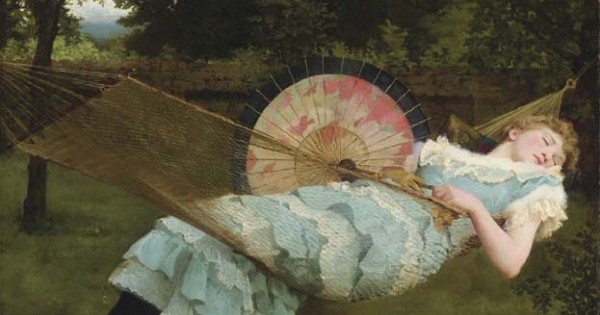
I wake to sleep, and take my waking slow.
I feel my fate in what I cannot fear.
I learn by going where I have to go.
To me that strange first line of Theodore Roethke’s great villanelle “The Waking” is mesmerizing. And I love to take my waking slow. This morning, though, I took it fast, with a start—that damn 5 a.m. robin. Still, I’d slept long and well. Waking, I felt rested, ready to begin (in neuroscientific terms) my “active and deliberate sensorimotor discourse with the environment.”
Waking (and sleeping) occur under the influence of our brain’s circadian clock. The clock is called the suprachiasmatic nucleus. The nucleus (group of neurons) is located in the hypothalamus, one on each side, deep in the brain, low behind the ear. The clock is ruled mainly by light, by the shift from night to day and back to night as the earth turns. It receives information about light from particular retinal cells that send their signals along the optic nerve directly to it.
Awake, I am conscious. I am aware, in part due to the neurotransmitters norepinephrine, serotonin, and histamine—each concerned with attention and vigilance. Awake, I can move at will. I can get off my chair and cross the room. Simple, but impossible in sleep.
I wake to a busy day of teaching, editing, writing. I also steam broccoli and wash the kitchen floor. And when night arrives, I pour myself a glass of red wine. I settle down for a good read—right now Graham Greene’s The End of the Affair—an absorbing novel, not at all sleep inducing. But before I’ve read three pages, I fall into an exhausted sleep.
The thing about sleep, it’s involuntary. A person cannot will himself or herself to stay awake, even if life depends on it (you can fall asleep at the wheel). For us mammals, sleep deprivation is torture, resulting, if forced to continue, in death.
The brain activates sleep. There’s a switch that turns it on while shutting down the arousal regions of the brain. During sleep the brain energetically nixes consciousness and sensory perception and any ability to stand up. The old idea that the normal sleeping brain is inactive has been discarded. (Sleep disorders such as sleepwalking or the dangerous syndrome in which the dreamer gets out of bed and bodily enacts the dream are brain disorders.)
Sleep starts with non-Rapid Eye Movement (nonREM) sleep and continues through cycles of nonREM and REM sleep. At first brain waves slow down, down, down until they arrive at Delta waves, long and slow. Heart rate slows, respiration slows, blood pressure sinks.
The pituitary gland, a night worker, gets busy making the hormones that grow children and repair adult tissue. The pineal gland, also a night worker, synthesizes melatonin, related to circadian rhythms. And if sleep is restorative, it’s partly because during sleep glycogen stores are renewed (glycogen stores glucose).
Everyone dreams, even if everyone does not remember those dreams. During REM dreaming, the brain is more active than when awake. Neurons firing in the pons (located in the brainstem) set off REM sleep, during which the muscles are paralyzed: it is impossible to move. The frontal lobes, seat of logic, don’t function. But the visual association areas and the limbic lobe—that seat of feeling—are active. So we have vivid dreams, at times full of feeling.
But, dreaming, we are blind. Even when researchers open a sleeper’s eyelid and place objects in front of the eyeball, the dreamer cannot see. And sleeping, we don’t know what we know. Roethke got it right:
We think by feeling. What is there to know?
I hear my being dance from ear to ear.
Sleep turns us inward. It relieves us of cognizance and vigilance. Sleeping, we are deaf. But we may hear our being “dance from ear to ear.”

